Seasonal Teas by Harvest Month
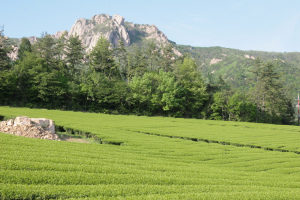
Tea Harvesting Timeline
Many of our customers are curious to know when to expect that their favorite, seasonal tea will be arriving at Tea Trekker.
In general, April, May & June are the major spring tea months in South and East Asia, when the china bush varieties of camellia sinensis bud and leaf out for the year.
The following is an approximate timeline of tea harvesting dates in China, India, Japan, Korea, Sri Lanka and Taiwan based on a normal weather cycle. Of course, these dates are always subject to the whims of nature and the seasonal/un-seasonal weather patterns and conditions that affect farms and agricultural crops. Cold weather will delay plucking, and unseasonably warm weather can speed up leaf growth and the pace of plucking and manufacture by as much as a week or two. Excessive rains may also be problematic for harvest timing as can drought.
And, for tea villages located higher and deeper in the mountains, seasonal tea production can be delayed by a week or two.
NOTE:
In the following timeline, all dates are the harvest dates of the fresh leaf.
Please allow from 5 days to 3 weeks (or longer) for the leaf to be processed into shelf-stable tea and then be shipped to us by air freight.
The more remote the garden is, generally, the longer the time period will be between harvest and when we receive the finished tea.
-
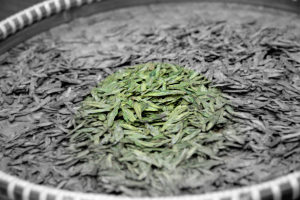
FEBRUARY (late)
China: production of bud-pluck green and black tea (dian hong) begins in late February in some regions of Yunnan Province. We also, in some years, see early Yunnan green tea harvested in a few isolated micro-climates in the south. (Green Buds, etc)
India: the Darjeeling and Assam regions in the north begin plucking 1st flush black teas at the end-of-February into mid-March, weather depending.
Sri Lanka: The quality season for the Southern Coast districts is February, and in the Central Highland districts of Nuwara Eliya and Kandy it is February and March.
- MARCH
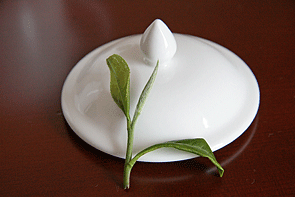
China: weather permitting, the arrival of early spring in mid-March begins the plucking season for some premium green and yellow teas in Western China. In Sichuan Province: Mengding Shan Gan Lu; Mengding Shan Huang Ya and Zhu Ye Qing are plucked in mid-March. The spring harvest for green tea in Yunnan Province is often peaking in March.
The earliest plucks of Xi Hu Region Longjing tea (Zhejiang Province) and tiny Bi Lo Chun (Jiangsu Province) may begin to appear at this time as well, although Longjing that we source is from a later, traditional harvest, so that it has more abundant flavor.
In eastern China’s Fujian Province, production of bud-plucked Yin Zhen white tea is often from mid-March to the end of March, but once again, is later many years.
In Yunnan Province dian hong leaf black teas begin to appear in the market along side leafy green and tender budset green teas by mid-March.
India: 1st flush production of Darjeeling and Assam tea continues
Nepal: Eastern Nepal begins plucking 1st flush black tea in mid-March.
Taiwan: early spring semiball-rolled oolong production begins in central Taiwan.
-
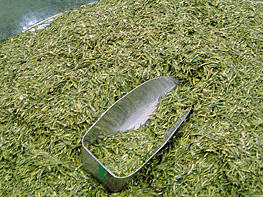
APRIL
China: April is the busiest time in eastern China for premium green teas from all of the important green tea producing Provinces. Teas such as Anji Bai Cha; En Shi Lu Yu; Huangshan Mao Feng; Long Ding; Lu Shan arrive early to claim the ‘Pre-Qing Ming’ designation (before April 5th).
The 1st Fenghuang Dan Cong oolongs are plucked starting at the end of April.
Production of Lapsang Souchong and Jin Jun Mei begins in northern Fujian Province in April, as well as all the teas that make up the family of Keemun black teas.
In southern Fujian Province, semiball -rolled green oolongs from the Anxi region, especially (Tieguanyin and SeZhong varietals: Ben Shan; Huang Jin Gui; Mao Xie; Tou Tian Xiang ) begin to appear in late April and continue into May.
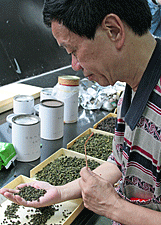
Light roast Wu Yi Shan oolongs ( Da Hong Pao, Jun Zi Lan, Rou Gui, Shui Jin Gui, Shui Xian, etc.) are manufactured in late April to early May but are sometimes not sent to market until June. Traditional charcoal roast Wu Yi Shan oolongs (heavy roast) appear in June.
Dian hong production in Yunnan Province begins in April and can extend into May
The leaf and bud materials for Pu-erh are plucked from old tea trees in parts of Yunnan Province from April to July.
NOTE: the spring season in China is divided up into 4 periods of time, and the harvest dates of the most anticipated green teas, such as Longjing, are associated with certain dates on the agricultural calendar. This is the ‘normal’ breakdown for the production time based on a perfect weather season:
- Pre-Qing Ming or Ming Qian tea ( leaf plucked before April 5th )
- Before the Rains or Yu Qian tea ( leaf plucked before April 20th )
- Spring tea or Gu Yu tea ( leaf pucked before May 6th )
- Late spring or Li Xia ( leaf plucked before May 21st )
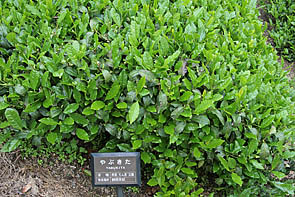
India: spring tea from the Nilgiris are manufactured in April/May.
2nd flush Darjeeling and Assam teas also begin their plucking season in April.
Japan: limited early production of the first newly-harvested leaf of the new tea year – Shincha – may begin in late April as well as first plucked Sencha (Ichibancha) teas. The more important month for these teas is May; however some years an early harvest is possible in late April.
Korea: the first of the season green – Ujeon – is plucked just before Koku ( the first grain rain and the sixth seasonal division), around April 20th.
Taiwan: The earliest, very expensive spring pluck Baozhong comes to market towards the end of April. Production of jade oolongs from lower level elevation tea gardens begins in earnest.
- MAY
China: Several later-to-market Eastern China Greens that rely on very large leaf sizes, such as Buddha’s Tea (Fo Cha); Lu An Guapian; and Tai Ping Hou Kui are ready for May production.
May also brings to market the Bai Lin Gong Fu family of hong cha, and the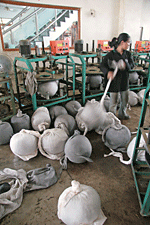 Golden Monkey Panyang Congou family of hong cha.
Golden Monkey Panyang Congou family of hong cha.
The base tea for jasmine tea ( zao pei ) is made now and stored until the tea can be ‘married’ with the fresh flower blossoms when they arrive in the summer (mostly late summer into early autumn).
Production of leafy Bai Mu Dan; Gong Mei; and Shou Mei white teas begins and ends in May.
India: 2nd flush teas in Darjeeling and Assam continue to be plucked.
Japan: Production of the first newly-harvested leaf of the new tea year – Shincha – is underway, as well as the first-plucked Sencha (Ichibancha) teas. Production of Sencha continues in various regions throughout May. Gyokuro tea production can begin in mid May and continue into early June depending on the location of the tea gardens.
Korea: production of Sejak occurs during Ipha ( the start of summer- around May 6th ); plucking of Jungjak follows during Soman ( full grains season around May 21st ).
Taiwan: production of the spring pluck of high-mountain gao shan begins in the higher elevation tea gardens. Plucking may continue into early June. Manufacture of Bai Hao and BaoZhong begins in earnest.
- JUNE

Sri Lanka: the Uva district of the Eastern Highlands produces its quality season teas from June-September.
Taiwan: manufacture of Bai Hao and BaoZhong oolong continues into June and sometimes July.
- SEPTEMBER / OCTOBER / NOVEMBER
China / Fujian Province: Fall production of Tieguanyin and local Se Zhong varietals is underway at the end of September into October
China / Guangdong Province: September/ October production of winter dan cong begins
India / Nepal: Fall production of autumnal teas begins in October and can extend into mid-November
Taiwan: mid-to-end of October until mid-November is the time for winter production of high mountain gao shan and mid-level elevation semiball-rolled oolongs; and leafy autumn (aka: ‘winter’) Bai Hao and Baozhong oolongs.
- JANUARY
India: winter frost teas (black tea) from the Nilgiri region of southern India are manufactured from December thru March.
Sri Lanka: West Highlands quality season in the Dimbula region is January thru March.

